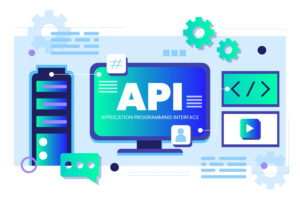
These days, designing a website is easier than ever before. What was once a job for dedicated web designers, is now something most people with a creative eye can do, given a few simple tools from web design platforms such as Word Press or Square Space. But does this mean that you no longer need a web design company or a web development expert? Well, it all depends on the level at which your website needs to be.
If your website is merely for a presence on the internet and you just want something simple that says, “hey, I exist”, then you could probably DIY a quick landing page. But if your website is going to be your source of income or the gateway to your product or service, then you can’t get away with a basic theme and a few colour changes – you need a professional on board. A web design company or web development experts like the crew at Kodework in Norway and India looks at the web in a way that’s very different from you and I. It’s their inherent design principles that set them apart, and we’re going to share a few of those best practices with you.
Spatial relationships
We may not realise it, but the spacing between elements on a website is very important. It takes a keen eye to recognise when the space between elements is off by even a few pixels. Carefully placed elements can draw the user’s attention to important parts of your webpage, thereby enhancing the usability and readability of the overall design.
Texture and colours
There was a time when big bold colours and gradients were a standard. Because websites were extremely expensive, most companies wanted all the colours they could throw onto the page. Well, that’s not the case anymore. Good web design is clean, minimal, and uses a set colour palette. The colours of your website are usually determined by your brand guidelines. Gaudy colours can take the user’s attention away from an effective CTA, and could even affect your bounce rate. Nobody wants to spend time on a site that is visually jarring.

Typography
The use of appropriate fonts and text layouts is extremely important in good web design. Typography helps create clarity and sets up a hierarchy. Understanding fonts, font sizes, and font arrangement increase the readability, legibility, and scan-ability of the design. It’s important that you use standardised, preferably open source fonts when designing your webpage. This ensures that your fonts load no matter what system or browser a person uses. You will also want to use fonts that scale up or down comfortably since most users view webpages on mobile devices. Finally, stick to one, maybe two different fonts while designing a webpage. A web design company would usually refer to the brand guidelines while choosing fonts and colours.
Navigation
A new website is like a new destination. A user would be pretty lost if they did not know where to go. That is why intuitive navigation is an integral part of good design. There are many ways to navigate a website. Sleek ‘hamburger’ menus on the top right or left of a page with slide-out menus are one way of doing it, or if you have a simple one-page design, a vertical scrolling website with a simple link-based menu on the top is quite sufficient. It’s important to ensure that important parts of your website are clearly labelled so that users know where they are on your site.

Links
Good linking not only builds a connection between relevant content on your own website, but it could also be used to connect to pages outside your website. Link-building helps connect the internet and is an important concept in SEO. Knowing where and how these links can be used is very useful when designing a website so that you can plan your text placeholders accordingly. It’s not uncommon for a web development expert or web design company to work in tandem with an SEO expert when deciding who text and links will flow on a webpage.
Content
The last important design principle to keep in mind is good content. The saying ‘content is king’ is more relevant today than ever before. If you can guarantee a constant flow of genuine content on your website, you can rest assured knowing that your web traffic will increase regularly. Great content is what makes people stick around on your website. Together with good navigation and links pointing them to other interesting areas of your website, and comfortable fonts with an accompanying colour palette, you are sure to have a winner of a website!
So, are you ready to give web design a go? Or maybe you have a project that requires a highly professional website design? You can reach out to the professionals at Kodework at www.kodework.com. Find out more about the exciting world of Web Development by checking out our Web Design Guide – Best Guide for 2020.


